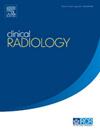透视引导下自膨胀金属支架治疗恶性直肠梗阻临床成功及并发症的决定因素
IF 2.1
3区 医学
Q2 RADIOLOGY, NUCLEAR MEDICINE & MEDICAL IMAGING
引用次数: 0
摘要
目的评价自膨胀金属支架(SEMS)治疗恶性直肠梗阻(MRO)的安全性和有效性,并探讨导致临床失败及相关并发症的因素。材料与方法回顾性收集2014年9月至2024年7月的MRO病例。对患者数据进行分析,以确定影响临床成功率和短期并发症的决定因素。随后,采用log-rank检验和Cox比例风险模型探讨姑息治疗中影响支架通畅的因素。结果纳入66例MRO患者的sa队列分析。技术成功率为98.5%,临床成功率为95.5%。多因素分析发现梗阻时间是临床成功率的重要预测因素(OR = 1.081;95% CI = 1.081 ~ 1.148;p=0.010)和短期并发症发生率(OR = 1.061;95% CI = 1.008 ~ 1.116;p = 0.022)。在一组38例接受姑息治疗的患者中,Cox回归分析发现,术后化疗是影响支架通畅时间的重要决定因素(OR = 0.25;95% CI = 0.082 ~ 0.762;p = 0.015)。结论对于MRO患者,SEMS是一种有效且成功的治疗方法。迅速缓解梗阻与高临床成功率和减少短期并发症的发生率有关。此外,在接受姑息治疗的患者中,术后化疗已被证明可以延长支架通畅的时间。本文章由计算机程序翻译,如有差异,请以英文原文为准。
Determinants of clinical success and complications in fluoroscopy-guided self-expandable metal stent for treatment of malignant rectal obstruction
Aim
To evaluate the safety and efficacy of self-expanding metal stents (SEMS) in the management of patients with malignant rectal obstruction (MRO), as well as to identify the factors contributing to clinical failure and associated complications.
MATERIALS AND METHODS
Cases of MRO from September 2014 to July 2024 were retrospectively collected and reviewed. Patient data were analyzed to identify determinants influencing clinical success rates and short-term complications. Subsequently, the log-rank test and Cox proportional hazards model were employed to investigate factors affecting stent patency in palliative treatment.
RESULTS
A cohort of 66 MRO patients was included in the analysis. The technical and clinical success rates were observed to be 98.5% and 95.5%, respectively. Multivariate analysis identified the time of obstruction as a significant predictor for clinical success rate (OR = 1.081; 95% CI = 1.081 to 1.148; p=0.010) and the incidence of short-term complications (OR = 1.061; 95% CI = 1.008 to 1.116; p=0.022). In a cohort of 38 patients undergoing palliative treatment, Cox regression analysis identified postoperative chemotherapy as the significant determinant influencing stent patency duration (OR = 0.25; 95% CI = 0.082 to 0.762; p=0.015).
CONCLUSION
For MRO patients, SEMS constitutes an efficacious and successful therapeutic approach. Prompt alleviation of the obstruction is associated with a high rate of clinical success and a reduced incidence of short-term complications. Furthermore, in patients undergoing palliative treatment, the administration of postoperative chemotherapy has been shown to extend the duration of stent patency.
求助全文
通过发布文献求助,成功后即可免费获取论文全文。
去求助
来源期刊

Clinical radiology
医学-核医学
CiteScore
4.70
自引率
3.80%
发文量
528
审稿时长
76 days
期刊介绍:
Clinical Radiology is published by Elsevier on behalf of The Royal College of Radiologists. Clinical Radiology is an International Journal bringing you original research, editorials and review articles on all aspects of diagnostic imaging, including:
• Computed tomography
• Magnetic resonance imaging
• Ultrasonography
• Digital radiology
• Interventional radiology
• Radiography
• Nuclear medicine
Papers on radiological protection, quality assurance, audit in radiology and matters relating to radiological training and education are also included. In addition, each issue contains correspondence, book reviews and notices of forthcoming events.
 求助内容:
求助内容: 应助结果提醒方式:
应助结果提醒方式:


